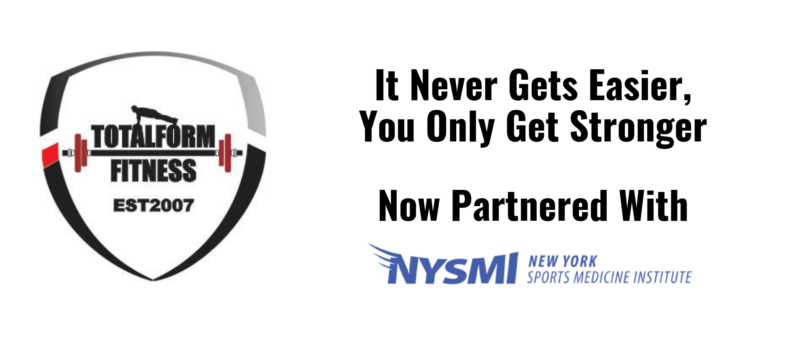
Orthopedic Surgery New York
At New York Sports Medicine Institute (NYSMI), we specialize in providing world-class orthopedic surgery to patients in New York City and the surrounding areas. Whether you’re suffering from a sports injury, joint pain, or a chronic musculoskeletal condition, our top-rated orthopedic surgeons are dedicated to offering advanced, personalized care designed to get you back to an active, pain-free life.
Orthopedic surgery is often required when non-surgical treatments, like physical therapy or injections, are no longer effective in managing pain or restoring function. At NYSMI, our board-certified orthopedic surgeons use the latest minimally invasive techniques to ensure faster recovery times and improved outcomes for a wide range of conditions, from knee replacements to shoulder reconstruction and beyond.
If you’re searching for specialists in orthopedic surgery in New York, look no further. At NYSMI, you’ll receive the most advanced care and a compassionate approach to help you through each step of your recovery journey. Please book an appointment today and let our expert team guide you to the best treatment plan for your needs.
Have you been looking for orthopedic surgery New York? Fill out the form below:
New York Sports Medicine Institute has an Orthopedic Surgery New York that provides a wide range of highly specialized treatments to properly evaluate and treat sports related and chronic conditions affecting the shoulder, knee, hip, elbow, hand, wrist, foot, and ankle. Sports injuries are often caused by trauma suffered during competition and repetitive or overuse wear and tear. Chronic conditions may include arthritis, age-related deterioration, or any number of factors related to use or associated health issues. When surgery is required, our Orthopedic Surgery New York offers minimally invasive arthroscopic surgery for a number of conditions related to injuries of the shoulder, knee, hip, elbow, foot, ankle, hand and wrist. Our orthopedic surgeons are also highly regarded for providing hip, knee, and shoulder total joint replacement.
Recovering From Hip Replacement Surgery: ORTHOPEDIC SURGERY NEW YORK
Hip replacement surgery is a procedure in which an orthopedist surgically removes a defective hip joint that has developed arthritis and replaces it with an artificial hip joint which is made of either metal or plastic. Hip replacement surgery is a last-resort option when all other non-invasive options such as physical therapy, pain management, and self-care have not worked. Once the hip joint has healed, patients report increased quality of life. At New York Sports Medicine Institute we are a team of orthopedists, physical therapists, a concussion specialist, and we offer orthopedic surgery New York that can help you every step of the way of your hip replacement process.
Recovery After a Hip Operation:
Immediately after your hip replacement, you will be monitored by your team of doctors for several hours and either provided further treatment or released based on progress. You could feel some pain however we will provide you with medicine to reduce this. Anesthesia can cause breathing issues, which can cause mucus to accumulate in the lungs. Deep breathing and frequent coughing help to keep the lungs clean.
The typical post-hip replacement surgery hospitalization lasts one night, with some patients leaving the same day of surgery and others leaving days after.
Physical Therapy & Pain Management:
Regular exercise to restore strength and flexibility in the hip joint is essential for a complete recovery. The goal is helping you return to your daily activities. After you are released, you will need to begin outpatient rehabilitation. This begins based on your overall bodily condition post-surgery. At New York Sports Medicine Institute, our team of orthopedists, physical therapists, and we offer orthopedic surgery New York that will work to get you back to living your life pain-free.
Depending on your hip condition, a physiatrist may offer injections that can reduce pain and aid in overall healing. In conjunction with physical therapy, our orthopedic surgery New York can greatly help you during the post-surgical rehabilitation process.
Take Care of Your Surgical Wound:
You can typically remove the surgical bandage after five days. If you have sutures or pins, keep the area clean and dry until it is removed about two weeks after surgery. When bathing you must protect the area so that you do not get wet. Your surgical team will go over this process with you.
If there are signs of infection, contact us for orthopedic surgery New York immediately. Signs of infection may include:
- Redness around the cut.
- Drainage issues at the incision.
- Flu-like symptoms.
How To Reduce Swelling and Inflammation:
Circulation of the affected leg is slow after surgery, resulting in swelling of the calf and ankle. The swelling lasts on average 12 weeks but should decrease with each week. To reduce puffiness, we recommend resting your legs, knees above the heart, four to five times a day for 15 to 20 minutes each. Apply a cold compress to each painful or swollen area four to five times a day for at least 15-20 minutes.
Your physical therapist and physiatrist will help to reduce swelling and inflammation by prescribing the right treatment plan.
How To Prevent Blood Clots:
Physical activity is the key to reducing the risk of a serious blood clot in your body. Walking, even over short distances, promotes circulation so as soon as you receive the go-ahead to begin walking, you should. Aim and bend your ankle repeatedly while sitting. Also, remember to take a prescription anticoagulant medication.
The Symptoms of a Blood Clot Include:
- Increase swelling of the affected leg, which does not decrease.
- Pain when touching the calf.
If you have any of these symptoms, contact our office immediately for further instructions!
Follow-Up Post Hip Replacement Surgery:
Up to one year post-surgery, you will have regular follow-up visits with your orthopedic surgeon. Your physician may run tests including x-rays, perform a physical examination, and discuss your concerns and mobility and comfort progress. Because we are a multidisciplinary team of orthopedists, concussion specialists, physical therapists, and orthopedic surgery New York, we can help you in all aspects of the hip replacement process.
ACL Surgery Recovery Tips
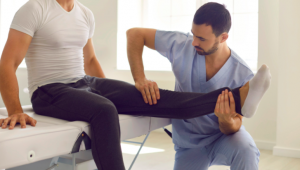
If you have suffered an ACL injury and are seeking Orthopedic Surgery New York New York Sports Medicine Institute is here for you. The stress and pain involved in an ACL injury can often be overwhelming for patients. Recovery can be a lengthy process, however, there are tips to help you get back on your feet and doing what you love as quickly as possible.
ACL Injuries At NYSMI Orthopedic Surgery New York
An anterior cruciate ligament, or ACL, is a strong band of tissue that connects the thigh bone to the shinbone at the knee. An ACL tear is a common knee injury seen especially in athletes. The injury is caused by a tear or sprain of the ligament. This painful trauma often requires surgery and physical therapy.
There are three types of ACL sprains:
- An overstretched ligament that is considered the mildest form of injury and can be treated without surgery.
- Fibers of the ligament are partially torn. The ACL is stretched to the point that it is loose and requires surgery.
- A complete tear of the ACL into two separate sections and requires surgery. This is the most common sprain among athletes.
Common Causes for ACL Tear
Sports and fitness activities are the main causes of ACL injuries. Popular sports that are commonly related to ACL injuries include football, basketball, tennis, soccer, and downhill skiing. This is because these sports require increased agility from athletes. The swift motions then create risk for possible injury. Some examples of a movement that put stress on the knees and cause ACL tears are:
- Quick pivoting or “cutting”
- Landing incorrectly from a jump
- Sudden stops
- Twisting the knee
- Sustaining a direct hit on the knee
ACL Surgery Recovery Tips With Orthopedic Surgery New York
If you are in need of surgery, the days, weeks, and months following the procedure are crucial to recovery. Rehabilitation is a slow process that requires dedication and perseverance. For many athletes, an ACL injury is not only painful physically but also mentally. You may want to pick up and continue your sport right where you left off, however, this is the time to slow down and focus on healing. How well you can take care of your body after surgery may determine the overall success of the procedure. Here are some helpful tips for healing after your ACL surgery:
Physical Therapy
After ACL surgery, the patient must work on regaining stability. Wearing a brace and using crutches can help to reduce pressure on the knee as well as provide support. Regaining mobility, strength, and stability can be a lengthy but rewarding process. Physical therapy allows patients to work on rehabilitation and is crucial to making a full recovery. Extension and flexion are slowly practiced while the knee begins to recover. To prevent future injuries, the knee must be exercised and strengthened.
Can Squats Cause Knee Damage?

Squats are a part of many people’s everyday workout routine. When done correctly, squatting should not cause any knee pain. However, people who squat incorrectly or have a pre-existing knee condition can experience damage to the knee. At New York Sports Medicine Institute, our Orthopedic Surgery New York can address various knee injuries with the proper care. Continue reading to learn why a person might experience knee pain while squatting.
Squatting Incorrectly
The first reason squats can cause knee damage is that a person is not squatting correctly. When improperly squatting, people mistakenly put pressure on the knees rather than the thigh muscles and glutes. Anyone who continues to experience pain after fixing how they squat should visit our Orthopedic Surgery New York to check for underlying knee problems. Common mistakes made while squatting that can result in injury include:
- Caving in your knees
- Not leading with your hips
- Allowing your knees to fall over your toes
- Not engaging your core
- Allowing your chest to fall forward
Spraining the Knee
If one twists their knee while squatting, it may cause a sprain. A sprained knee can result in pain and swelling. It can make it painful to squat or perform other exercises. In addition, there may be difficulty walking or putting weight on the knee joint.
Patellofemoral Pain Syndrome
Patellofemoral pain syndrome occurs when the location of the pain is around the kneecap and the front of the knee. If a person has patellofemoral pain syndrome, it becomes painful to squat.
Tendonitis
Another condition that can make squatting painful is tendonitis in the knee. Tendonitis occurs when tendons that connect muscles to bones become inflamed. The tendons become irritated due to overuse or repetitive movements that exert a lot of force on the tendon. Therefore, one who has tendonitis and bends their knees to squat will experience further damage and pain.
Arthritis of the Knee
Arthritis can affect almost any of our joints, including the knee. It results in pain and inflammation in the joints. Two forms of arthritis include osteoarthritis and rheumatoid arthritis. Osteoarthritis develops when the joints’ cartilage that enables them to move smoothly breaks down. Rheumatoid arthritis occurs when the healthy tissue surrounding the joints gets attacked by your immune system. Both osteoarthritis and rheumatoid arthritis can appear in the knee and result in further damage when performing squats.
Cartilage Tear
The cartilage in the knee can tear due to severe injury or sprain. If a cartilage tear occurs, knee support needs to be worn during physical activity to keep the tear intact. If it isn’t supported, then pain and further damage can result when squatting.
Patellar Tendon Tear
The patellar tendon is a tendon of the knee that can become torn due to a blow, jump, or weak tendon. The tear can worsen due to squatting and result in more pain. Some symptoms associated with a patella tendon tear include:
- Difficulty walking
- Knee buckling
- A moving kneecap
- Pain and tenderness
How to Prevent Knee Injuries– Orthopedic Surgery New York
Warming up before squatting can help avoid injury to the knees. Perform movements that mobilize the joints and increase blood flow. Stretching the legs before and after squatting can also help lower the risk of injury.
Knee Injury Recovery: Orthopedic Surgery New York
If you injure your knee from squatting, you can use the RICE method to help reduce pain and inflammation. The RICE method consists of resting the knee, icing with a cold compress, applying a compression bandage to the knee, and elevating the leg. It would be wise to also visit our Orthopedic Surgery New York for further treatment. Our doctor may give medication, exercises, or casting to repair the injury.
Treatment For Hip Arthritis
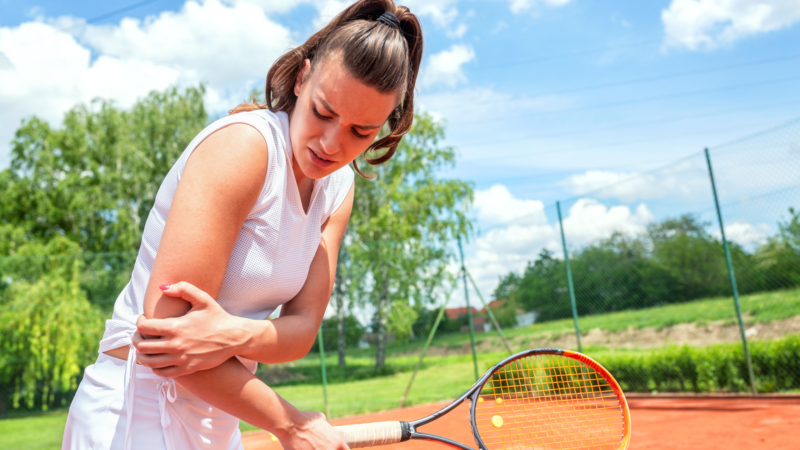
Arthritis is a frequent condition people experience with age. It causes stiffness and pain in the joints of the body. When the cartilage of a joint wears down, the bone can rub on other bones, creating this stiffness. This often occurs in the weight-bearing joints, such as the hip. At New York Sports Medicine Institute, we can take on patients with hip arthritis and recommend our Orthopedic Surgery New York.
Anatomy of the Hip
The hip is a large ball-and-socket joint. Ball of the joint comes from the femoral head, which is located at the top end of the thigh bone. The hip socket is formed by a part of the large pelvis bone called the acetabulum. See our Orthopedic Surgery New York to learn more about the hip joint and its components.
Causes of Hip Arthritis
There are multiple reasons why people can develop hip arthritis. Some examples of factors that make you more susceptible to experiencing arthritis include:
- Increasing age
- Family history of arthritis
- Previous hip injuries
- Obesity
- Improper formation of the joint
Symptoms of Hip Arthritis
The symptom seen the most with any arthritis is pain. The pain that comes along with arthritis worsens over time. Specifically, with hip arthritis, the following symptoms may occur:
- Radiating pain in the groin or thigh
- Pain that increases with activity
- Difficulty moving due to stiffness
- An apparent grinding noise occurring during movement
- Decreased range of motion in the hip
- Increased joint pain with colder weather
If you experience any symptoms of hip arthritis, then get in touch with our Orthopedic Surgery New York.
Testing for Hip Arthritis
If you come to an appointment with our Orthopedic Surgery New York, we can evaluate your symptoms and perform tests to diagnose your hip arthritis. First, a physical examination will be performed by our specialist, followed by an order of diagnostic tests. During the physical examination part of your appointment, your hip will be inspected for the following:
- Tenderness
- Range of motion
- Pain along with pressure on the hip
- Complications with the way you walk
- Any signs of injury to the surrounding the hip
The following diagnostic tests may also be taken to provide detailed pictures of arthritis in the hip:
- X-ray
- MRI scan
- CT scan
Nonsurgical Treatment Options: Orthopedic Surgery New York
There isn’t any cure for arthritis; however, some treatment options can ease symptoms like pain and mobility. Specifically, one nonsurgical treatment option is lifestyle modifications. The following lifestyle modifications can be made to slow the progression of your condition:
- Minimizing activities that worsen the condition, like climbing stairs.
- Performing lower impact activities rather than high ones.
- Losing weight to reduce stress on the hip joint.
Physical therapy is another way to reduce the symptoms of arthritis. Assistive devices, such as a cane, crutches, or a walker, are also a solution to help you walk more easily. Lastly, medication can also help. Acetaminophen can reduce pain, nonsteroidal anti-inflammatory drugs can reduce pain and inflammation, and corticosteroids can also reduce inflammation.
Surgical Treatment Options: Orthopedic Surgery New York
In more severe cases of hip arthritis, surgical treatment may be the solution. Our Orthopedic Surgery New York can perform the following surgeries:
- Total hip replacement- The damaged acetabulum and femoral head are removed and replaced with metal, plastic, or ceramic joint surfaces.
- Hip resurfacing- Only the damaged parts of the socket are removed and replaced with a metal shell.
- Osteotomy- The head of the thigh bone or the socket is cut and realigned.
Orthopedic Treatment For Hip Flexor Tears
Hip flexor tears are an extremely uncomfortable and painful situation. It can severely limit your range of motion and lead to other injuries. this tear occurs when one of the many muscles in the iliopsoas and quadriceps tears and weakens the lower body. If you or someone you know is in need of an Orthopedic Surgery New York our team at New York Sports Medicine Institute can help you!
Muscles included in the hip flexor are as follows:
- Psoas major: A deep muscle that connects your spine to your leg.
- Iliacus: A flat, triangular muscle that lies deep within your pelvis.
- Rectus femoris: One of the four quadricep muscles responsible for attaching your pelvis to the patellar tendon.
- Pectineus: Quadrangular muscle that lies on top of the inner thigh, it is the primary muscle in your groin.
- Sartorius: A long thin muscle that runs down the entire length of the thigh from the pelvis to the knee. It is responsible for flexing the knee and the leg.
The Importance of Healthy Hip Flexors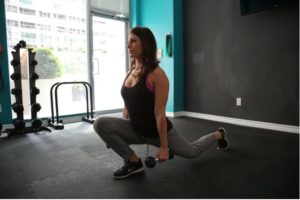
The purpose of the hip flexor muscles is to bring your knee toward your chest and to bend at the waist. Thankfully, there is a treatment for the tear and you can receive that treatment when you visit an Orthopedic Surgery New York. At the New York Sports Medicine Institute, you will receive care for any tear that you have suffered around the hip. We will also make recommendations in terms of physical therapy and nutrition.
Causes of Hip Flexor Tears
Common in athletes who jump or run while performing high knee are at greater risk for a tear. A hip flexor tear can occur from the following:
- Stress fractures from repetitive movements
- Physical activity such as force from playing a sport
- Fast pivoting, often associated with Hockey, golf, and soccer players.
Patients have often described the pain from a hip flexor tear as:
- Sudden pain
- Increased pain when lifting your thigh toward your chest
- Muscle spasms at your hip or thigh
- Swelling or bruising at your hip or thigh area
Grades of Hip Flexor Tears
Your tear is graded on a scale of 1-3. 1 is just a minor tear in which only a few fibers are damaged. 2, a significant number of muscle fibers were injured and you have experienced the loss of function in the hip flexor. 3, the muscle has been completely torn and results in someone usually not walking. If you believe that you have suffered a hip flexor tear, we implore you to reach out to us today. Make sure to see an Orthopedic Surgery New York so that you can receive the care and early treatment you need.
Home Exercises For Hip Flexors
- Seated Butterfly Stretch: Sit on the floor with back straight up, push feet together and pull the heels toward you. Hold for 30 seconds.
- Bridges: Lie on your back with knees bent and hands on the floor, then lift hips off the floor while squeezing the glutes. Breathe and hold for a few seconds, repeat 3 times.
- Lunges: From an upright position, take a step forward with your left foot, bend the extended knee, and transfer onto the front leg, lower yourself down until your knee is slightly above the floor. Repeat with the opposite leg.
There is a possibility of surgery if your flexor tear is severe enough. If that is the case, then your prescribing orthopedist will recommend you to a physical therapist to help build up strength back into the hips.
Elbow Pain In Baseball Players
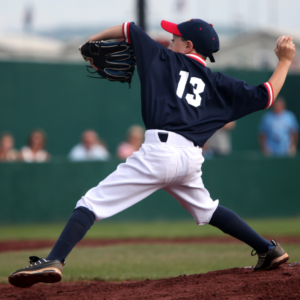
As with any sport, playing baseball brings fun but also the potential for harm. Because pitching the ball puts extra stress on the throwing arm, baseball players are more prone to elbow pain. At New York Sports Medicine Institute, we are dedicated to offering the finest standard of orthopedic and sports medicine services. Our trusted doctors specialize in treating our patients’ needs. If you are interested in an Orthopedic Surgery New York, please give us a call today!
Pitchers Elbow
Pitcher’s elbow, also referred to as medial epicondyle apophysitis in baseball, is a frequent problem among young players. Pitcher’s elbow, which is caused by “overuse” and “repetitive movements,” produces pain and swelling inside the elbow, limits the range of motion, and limits or prevents the ability to throw a ball.
Causes of Pitchers Elbow
For baseball players (especially pitchers), the aggressive and redundant nature of overhand throwing can cause irritation of the growth plate within the throwing elbow, likely to result in pitcher’s elbow. Because one’s elbow configuration (including bone fragments, growth plates, and tendons) isn’t really fully mature or developed, childhood and adolescence baseball players are more likely to sustain this injury.
Pitcher’s elbow is caused by the following risk factors:
- Age. Because their elbow joints have not fully grown, young baseball players (especially those between the ages of 9 and 14) are at greater danger. Youth pitchers often have less mature bones, weak tendons, accessible growth plates, and underdeveloped musculature, all of which expose them to sports injuries.
- Pitching an excessive number of games. The number of games pitched should be properly tracked, and the pitch count restrictions of the league should be obeyed. Overuse in baseball has been linked to injuries like the pitcher’s elbow, according to research. There’s evidence that it can happen during a game, a season, or a year. If the player feels pain before reaching the pitch count limit, he or she should stop immediately.
- Mechanics that aren’t satisfactory. Throwing mechanics that aren’t correct can place extra strain on the elbow joint. Throwing mechanisms can help young players avoid injury and establish good techniques that will help them enhance their skills. To make sure you’ve acquired good mechanics, consult your coach or other experienced trainers.
How To Prevent Pitcher’s Elbow From Orthopedic Surgery New York
- Stretching and gentle, progressive throwing should always be part of your warm-up routine.
- Aside from pitcher, rotate through other positions.
- It’s not a good idea to pitch on consecutive days.
- Pitch Smart guidelines or those established by your school or club team should be followed.
- Even if the pain is minor, never pitch through it.
How To Treat Pitchers Elbow With an Orthopedic Surgery New York
If a child develops signs of pitcher’s elbow, he or she should cease pitching right away since the condition can worsen with constant stress and lead to serious consequences; as well as seek treatment from an Orthopedic Surgery New York. Resting and putting ice on the uncomfortable or inflamed part of the elbow for several days are nonsurgical therapies, as are over-the-counter pain relievers and physical therapy. Adjusting or refining throwing skills once the issue has cleared up may help prevent future damage.
